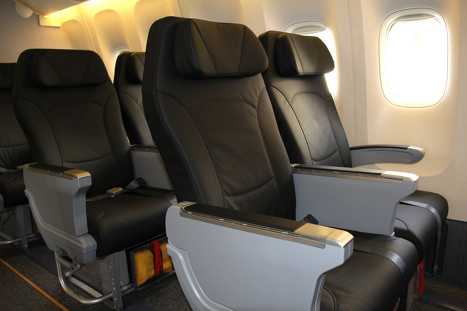Indeed, few people or most often nobody outlives an airplane crash. And it is equally true that if a plane simply fall from the sky, there will be no one aboard to survive the crash. However, there are certain situation in which SAFETY FEATURES may help save lives.
When an accident happens on the ground (while taxiing, take off, landing, etc), in most cases passengers survive. However, in some cases, the cabins can be overcome by fire or smoke before passengers can escape.
The testing procedure that is applicable in their case presuppose a “crash test” which means that the seat undergoes a rapid deceleration from a minimum of rom 30mph to 0mph instantly. The crash test also requires that the seats are tested with their floor tracks as well as with dummies located in each separate seat. The seats are also tested in terms of cabin floor strength as they need to be able to withstand impact forces that are likely to occur in case of an emergency landing, for instance. Besides, stronger floors will certainly improve the performance of 16G seats and further improvement of these seats would more than likely call for incremented floor strength.
The dummies are mainly used to measure the impact forces which will help the assessors evaluate the degree of protection offered by a particular seat. For instance the devices that are installed in the heads of the dummies in order to measure the acceleration forces are used to determine the Head Injury Criterion, also known as HIC. HIC actually determines the probability of head injury resulting from an impact. This criterion was developed to evaluate skull fracture as well as brain damage caused by frontal head impact, and is largely used in both automotive and aviation testing standards. So, plane seats are mainly tested using the same methods employed by highway safety authorities. Just like the automobile crash tests, the FAA tests are designed particularly for the aviation environment.
Therefore, we may point out that16G were seats designed to enhance the survivability of passengers and flight attendants in accidents. Thus, 16G seats also protect the passengers from suffering leg or spine injuries. They also protect the crew from injuring their chest in case upper torso restraints are used and they make sure that their occupants will not be trapped on impact. Plane seats play a major role in making a collision or any unfortunate event as survivable as possible.
Overall, the latest trend in so far as has been to KEEP THE PASSENGERS SAFE and help them get out of the aircraft asap. In fact, survivability is largely determined by seat design. A passenger has better changes of surviving a crash if the seat is able to absorb the shock of the impact and stands as pat as possible.

 En
En Es
Es Fr
Fr